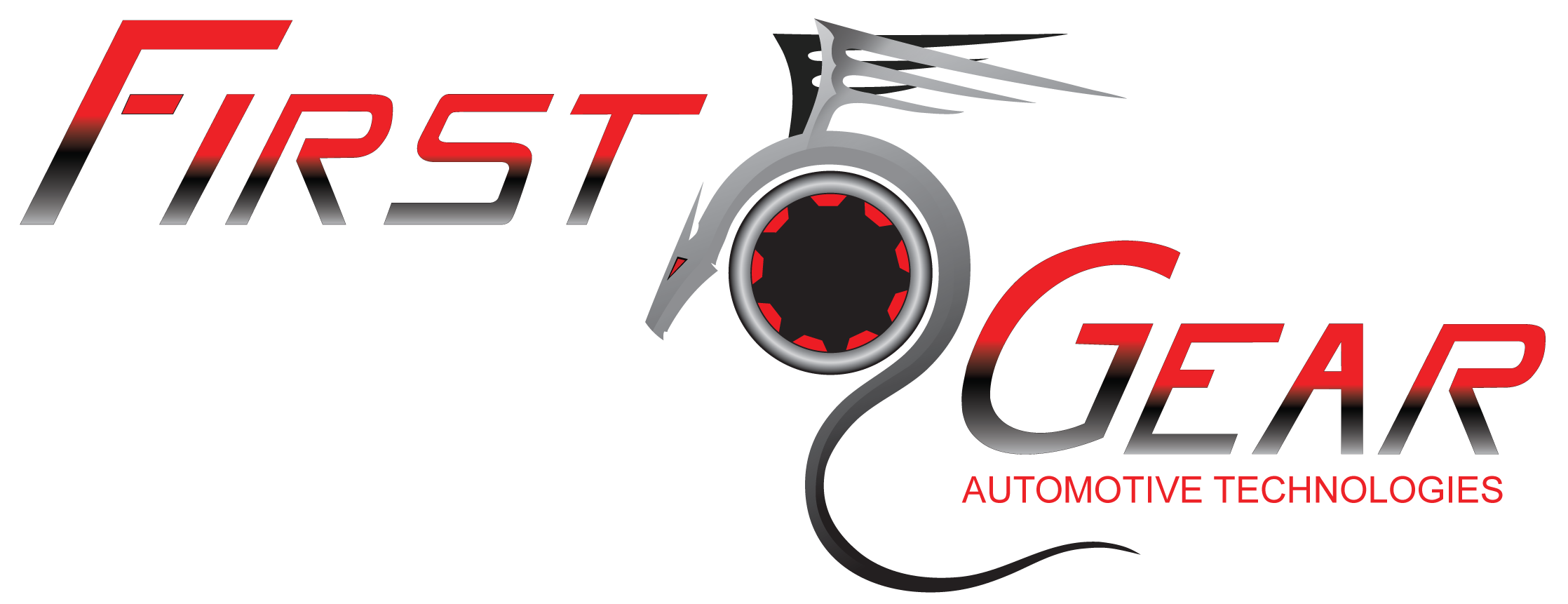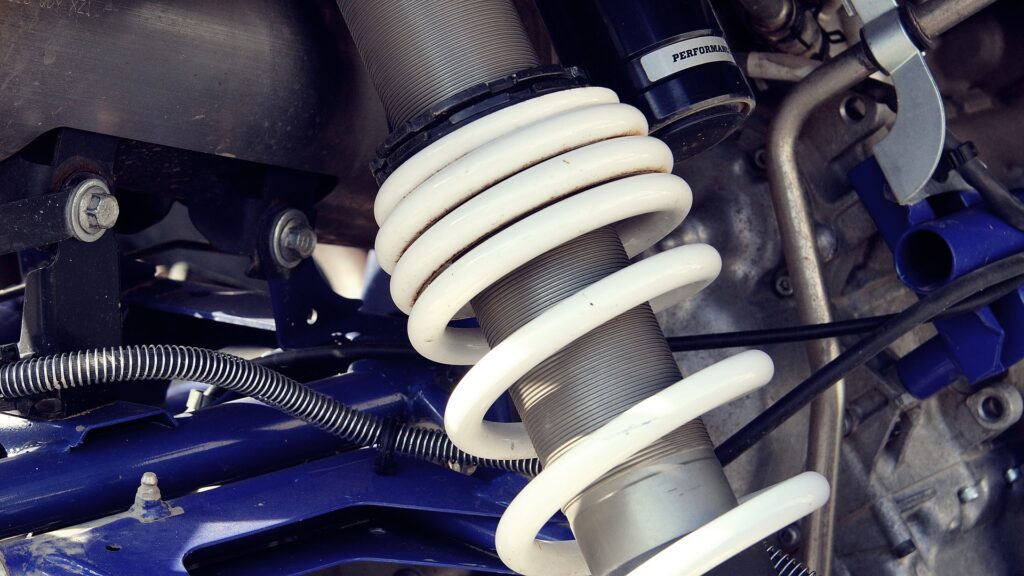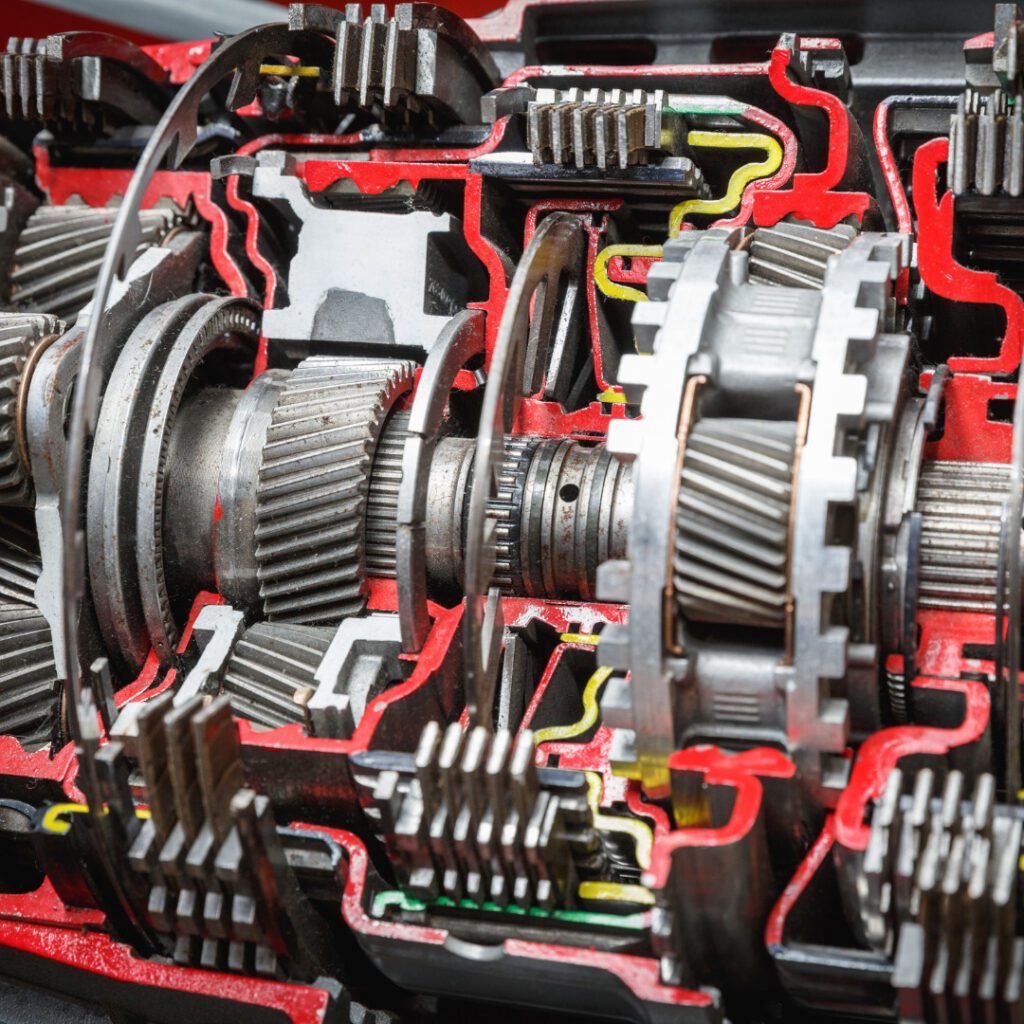The ABC’s of Car Care

With so many parts making up the workings of your car, it can become overwhelming to keep up with it. Most of us want to ensure that our vehicles have a nice long life. Figuring out how to do that can be like trying to put a puzzle together without knowing the picture. At First Gear Automotive we try to make understanding and caring for your vehicle as simple as possible. Below are the ABC’s of car care to help make caring for your vehicle as simple as possible.
A – Alternator
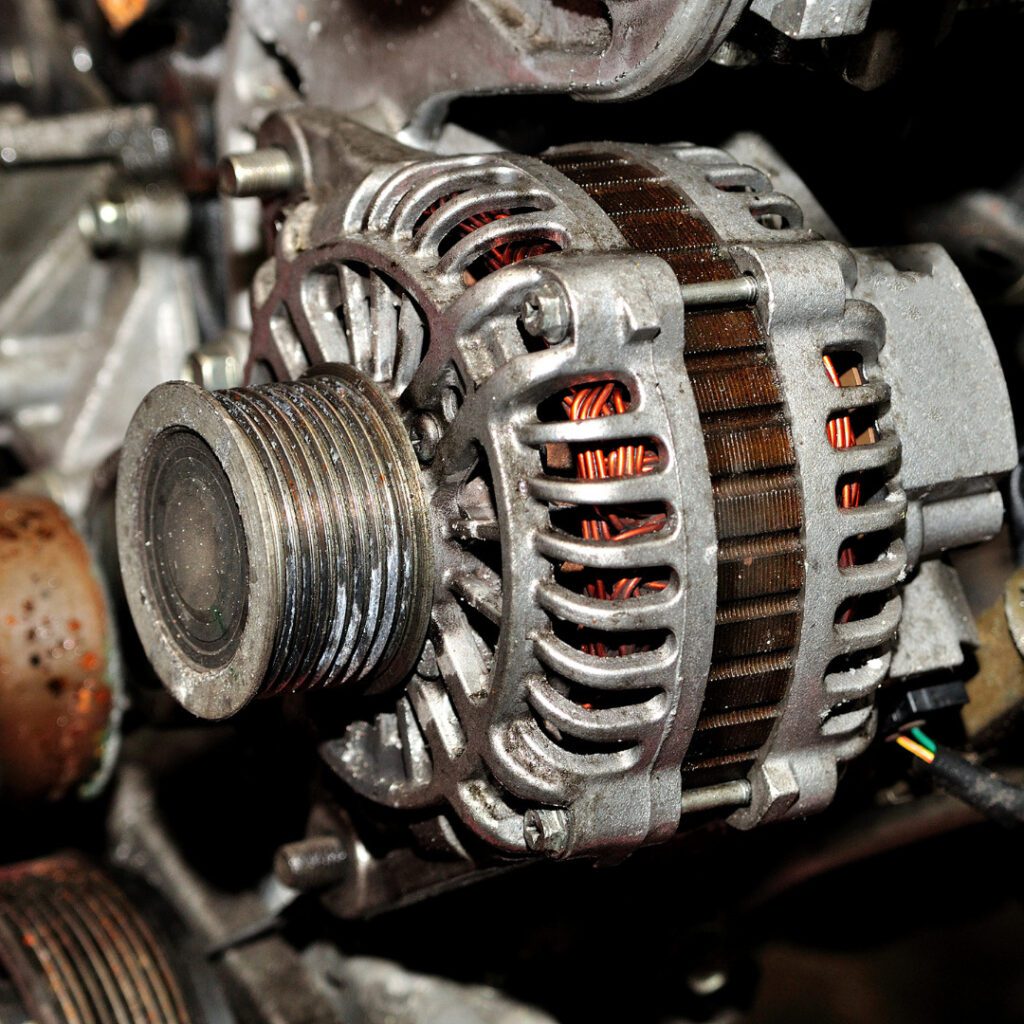
Many people think the battery powers the electrics in your car, but that is not the whole story. The battery provides the electricity needed for the electric starter motor to start the car. Once the car is running it’s the alternator that creates the energy to supply the electrical system and charge the battery. Alternators tend to last about 7 years or 150,000 to 200,000 kilometres when taken care of.
Tips for taking care of your alternator: Drive it daily and try to take it for a long drive at least once a week. Routine maintenance including an AVR (alternator voltage regulator) test twice a year. First Gear recommends to book your appointment in the spring and fall.
B – Battery
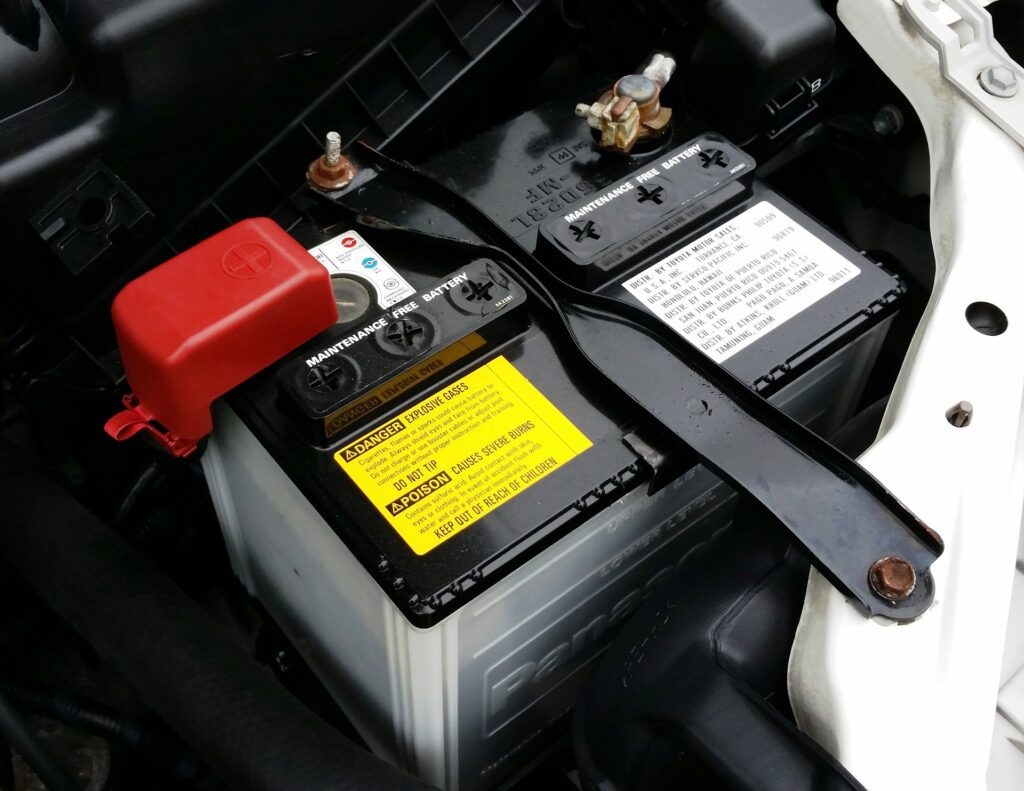
Car batteries and alternators work together like Bo and Luke Duke. The battery starts the vehicle and the alternator keeps it going. It is essentially the heartbeat of your car. When the battery stops, nothing else will work. A car battery typically last between 3-5 years on average when properly maintained.
Tips for taking care of your battery are the same as the alternator: Take the car for a long drive once a week. Try to drive it daily. Keep up with your car’s maintenance including an AVR (alternator voltage regulator) test twice a year in the spring and fall.
C – Clutch
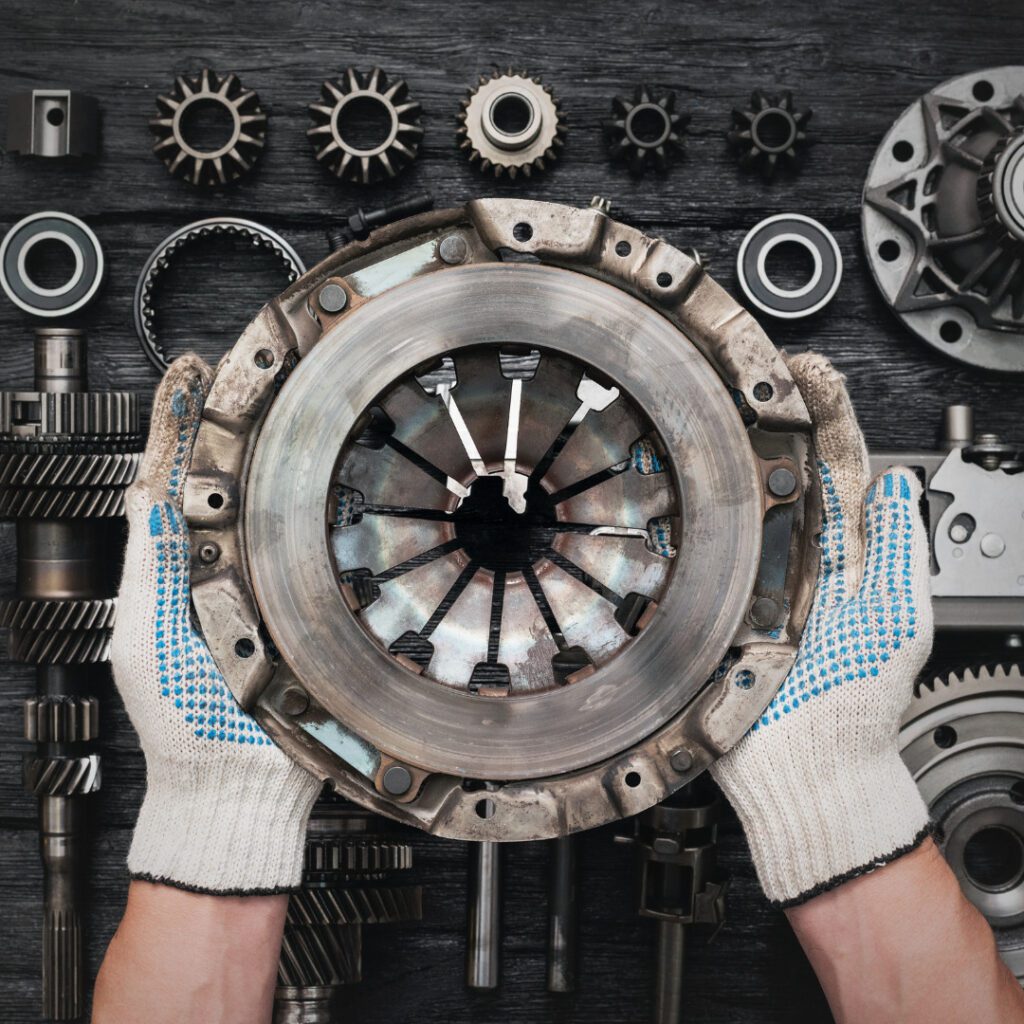
In a manual transmission vehicle the clutch is the part which connects two or more rotating shafts. To allow the car to both change speed and to come to a complete stop without turning off the engine, the connection between the wheels and the engine needs to be temporarily broken. A clutch lasts on average for 150,000 kilometers if the car is driven well.
Tips for caring for your clutch: Fully depress clutch when shifting and make sure you are in the next gear before releasing it; avoid shifting too fast and not fully depressing the pedal. Do not rest your foot on the clutch in stop and go traffic. Put the car in neutral and fully release the clutch while at a red light. Instead of downshifting when coming to a stop, rely more on your brakes. Maintain fluid levels and don’t drive the vehicle hard.
D – Drum & Disc
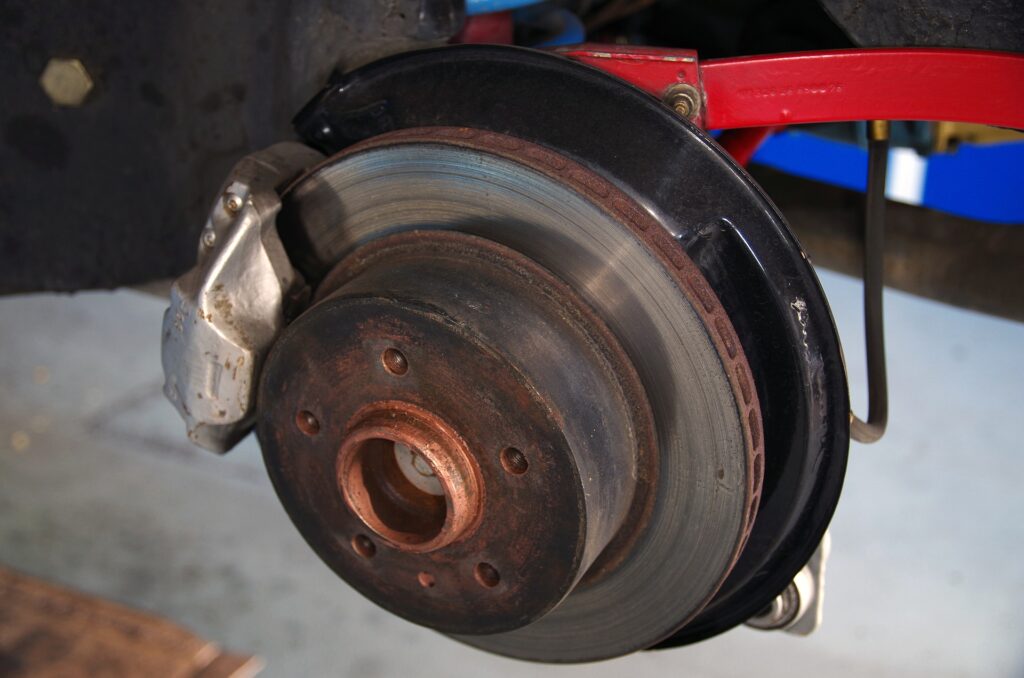
A drum is a part of the braking system of your car. It is a cylinder iron piece that attaches to the inside of the vehicle’s wheel. The drum covers the brakes set of shoes, that have been coated to create friction. When the brake pedal is pressed, these shoes are pushed against the inner surface of the brake drum, generating friction and slowing the car down. Drum brakes are lighter than disc brakes and improve gas milage.
A disc brake also uses heat and friction to slow a car down. However, instead of all of the components being housed inside of a drum, a disc brake uses a small rotor and caliper to stop the wheel movement. Within the caliper are two brake pads, one on each side of the rotor, that clamp together when the brake pedal is pressed. Disc brakes are less likely to over heat as they are exposed to outside air, where heat can build up inside of a drum brake.
Tips for taking care of your drums & disc: Try not to let your car still for long periods of time without being used as this can cause the drums and discs to rust. Get your brakes inspected twice a year, including checking the brake fluid.
E – Engine
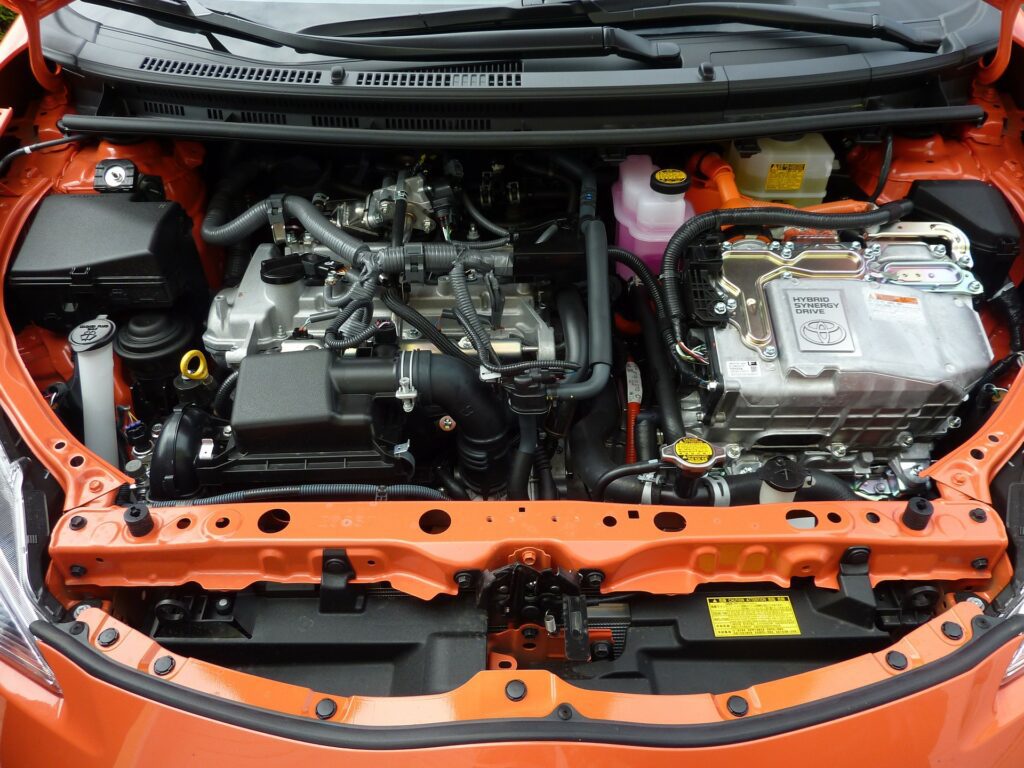
The engine is like brain of your vehicle. With many different functions, responsibilities and moving parts, your engine has many components that participate to make your car work. In it’s simplest form, an internal-combustion engine converts energy from the heat of burning gasoline into mechanical work, or torque. That torque is applied to the wheels to make the car move. There is a multitude of factors that determine how long an engine will last. A general average is about 250,000 kilometers.
Tips for taking care of your engine: Maintenance is key for ensuring a long and healthy life for your engine. Regular oil changes (First Gear recommends every 5000km) coolant checks every 50,000km as well as a once a year overall inspection
F – Fuse
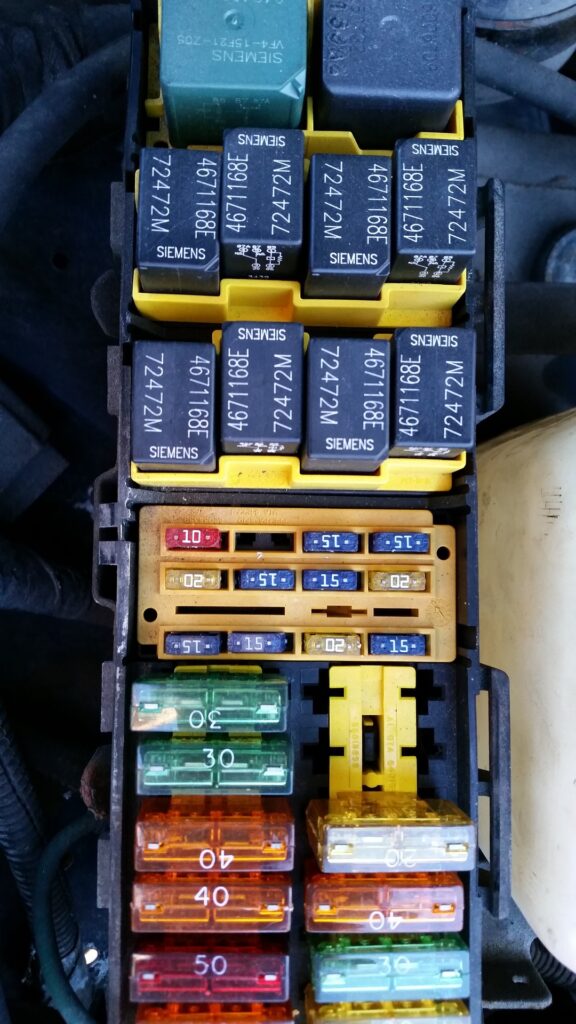
The fuses in your vehicle are used to even out and reduce the electrical current flowing through the wires. This prevents damaging the electronics from too much electricity. Most vehicles are equipped with two fuse boxes. One is located in the engine compartment and is used to protect engine components such as the cooling system, anti-lock brake pump, and engine control unit. The other is often found in the cabin area in or under the dashboard, on the driver’s side to protect interior electrical items. The fuse boxes protect the fuses from heat, weather and wear. Most fuse boxes will last for the life of the vehicle. Fuses also should last the life of your car unless there is an electrical issue that will cause a fuse to blow. If this happens have the fuse replaced by a professional mechanic at First Gear Automotive.
Tips for taking care of your fuses: Having your fuse box checked a few times a year to make sure there is no water damage. Water can get into the fuse box and if left, can cause corrosion and electrical damage causing the entire fuse box to be replaced.
G – Gaskets
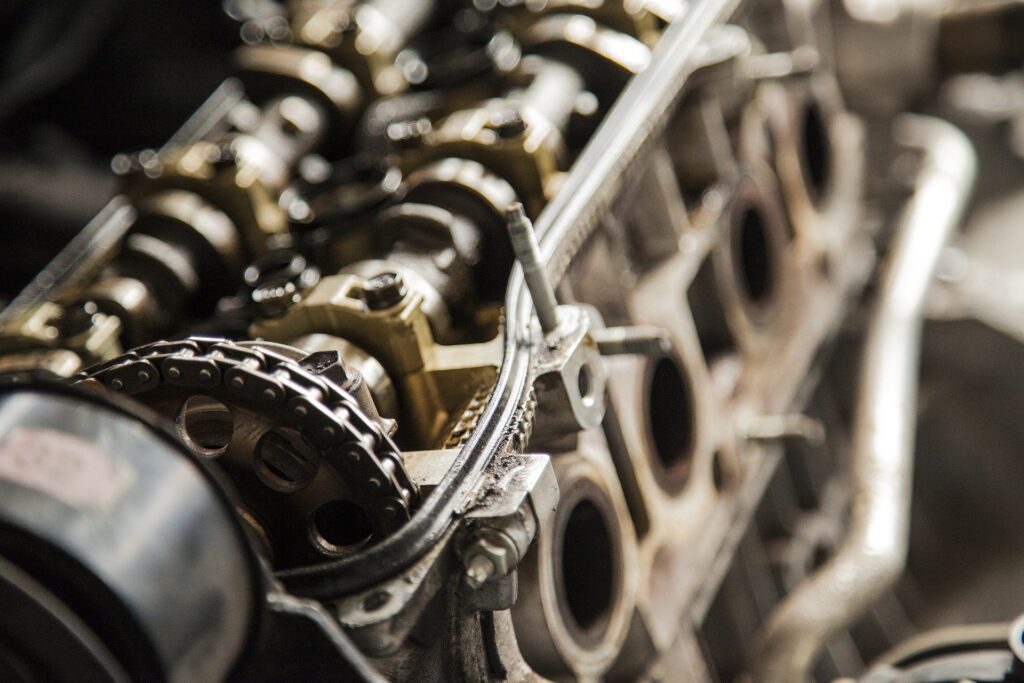
The gaskets in an engine are small but important elements in your car. They work to keep the fluids where they are supposed to be, prevent debris from entering the engine and to maintain pressure.
Cylinder Head Gasket is often called the head gasket prevents combustion gases from getting into the coolant system.
Intake Manifold Gasket regulates the temperature inside the chamber and prevents air from escaping during combustion. It makes sure the fuel has the proper amount of oxygen for the engine to preform accurately.
The Main Bearing Gasket is designed to keep the oil in the oil pan while the crankshaft is moving.
Camshaft Gaskets which are also referred to as a cam seal, does double duty. It prevents oil from seeping out and keeps dust and dirt from getting into the engine and causing damage.
Tips for caring for you gaskets is simple. Make sure that your vehicle does not overheat and your gaskets should stay healthy.
H- Hand Brake
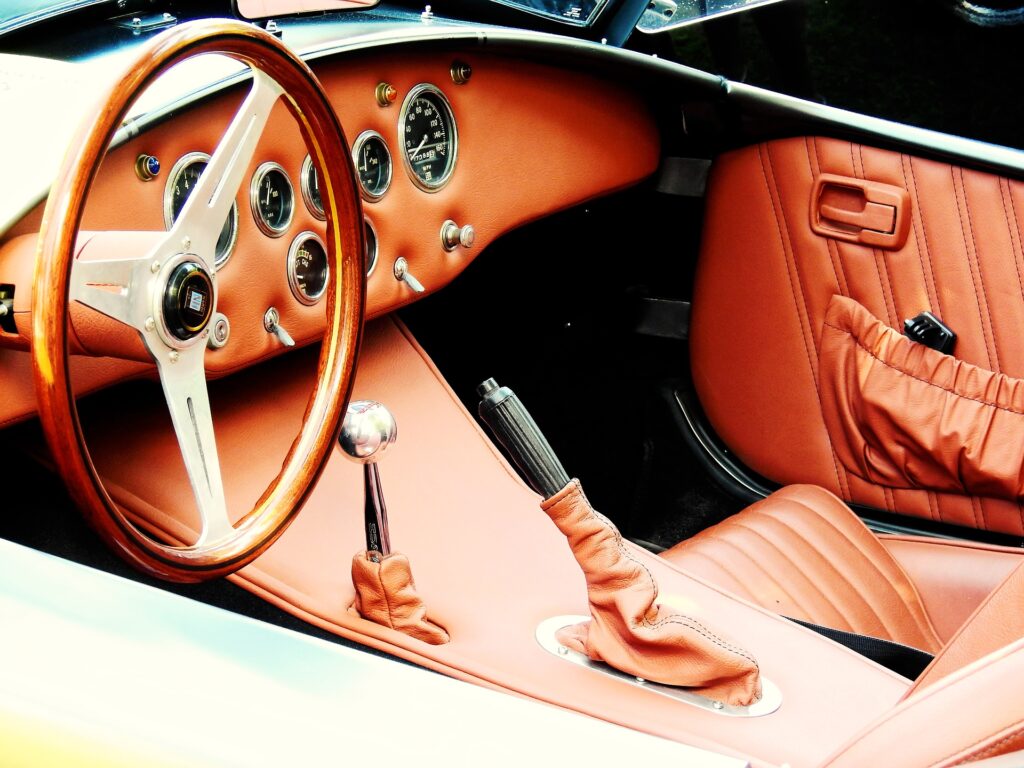
Every car comes equipped with one, handbrake, parking brake, e-brake, emergency brake. It will either be a lever beside the driver, a handle under the steering wheel or a switch/push button. This is called a hand brake because it’s operated by the hand as appose to the foot brake pedal. Most often used to prevent rolling when parking on an incline so is referred to as a parking brake. The term e-brake or emergency brake referrers to what to do in an emergency when your foot brake fails. Remember that the hand brake is a lot weaker than your foot brake so it will not slow you down quickly. Pull up on the brake slowly instead of one hard, quick movement as this could lock the hand brake.
Tips for caring for your hand brake: Use it! Most people only use the hand brake when on an incline but infrequent use could cause unused cables to oxidize and seize in place or break. If this happens, the brake will be useless in an emergency. By using it every time that you park you can extend the lifespan of the brake.
I – Ignition Coil
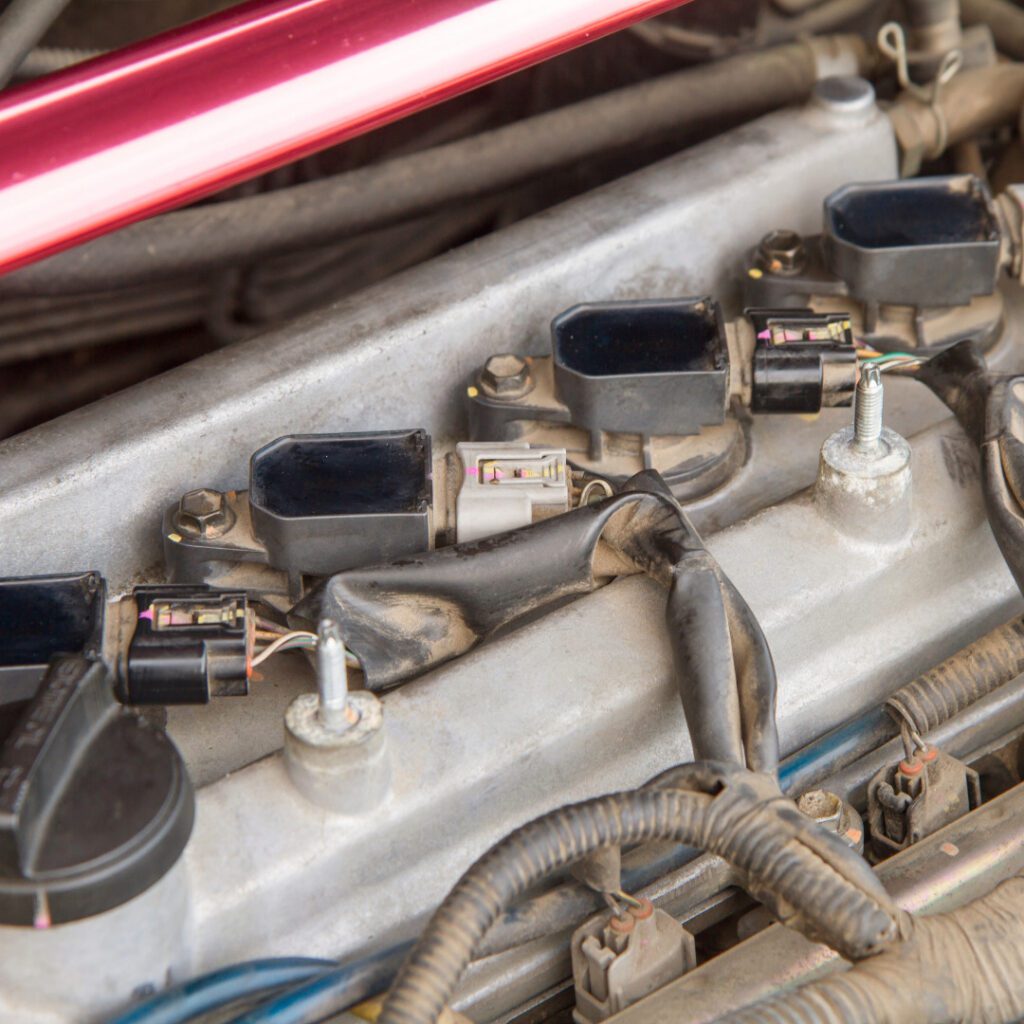
The ignition coil converts a low voltage current to high voltage energy that is delivered to the spark plug to ignite the air/fuel mixture within the cylinder. Your spark plugs are what supply the spark that ignites the air/fuel mixture, creating the explosion which makes your engine produce power. A high voltage wire goes from the ignition coil to the distributor and spark plug wires go from the distributor to each of the spark plugs. As these plugs approach the end of their life, the gap between the two leads begins to widen, which leads to reduced efficiency and the possibility of misfiring. It also puts extra pressure on the ignition coil causing them to wear out prematurely. If your spark plug corrodes to the point where it breaks, it could do serious damage to the interior of your engine cylinder, which leads to an extremely expensive repair.
Tips for caring for your car ignition: Getting a tune up. First Gear recommends every 100,000km to 150,000km but in some cars the recommendation is 50,000km. To check what your vehicle needs look in either your user manual or service manual. When you have a tune-up performed, it will include the replacement of several important wear-and-tear parts such as cleaning or replacing the spark plugs, replacement of the fuel filter, oxygen sensor, PCV valve, and spark plug wires as well as checking the ground straps to see if they are broken or corroded. All of your vehicles electrical currents flow through the ground straps (also called ground cable). If you were to have a bad ground strap in your vehicle, then you will have all kinds of electrical problems so checking these with a tune up is extremely important.
J – JACK
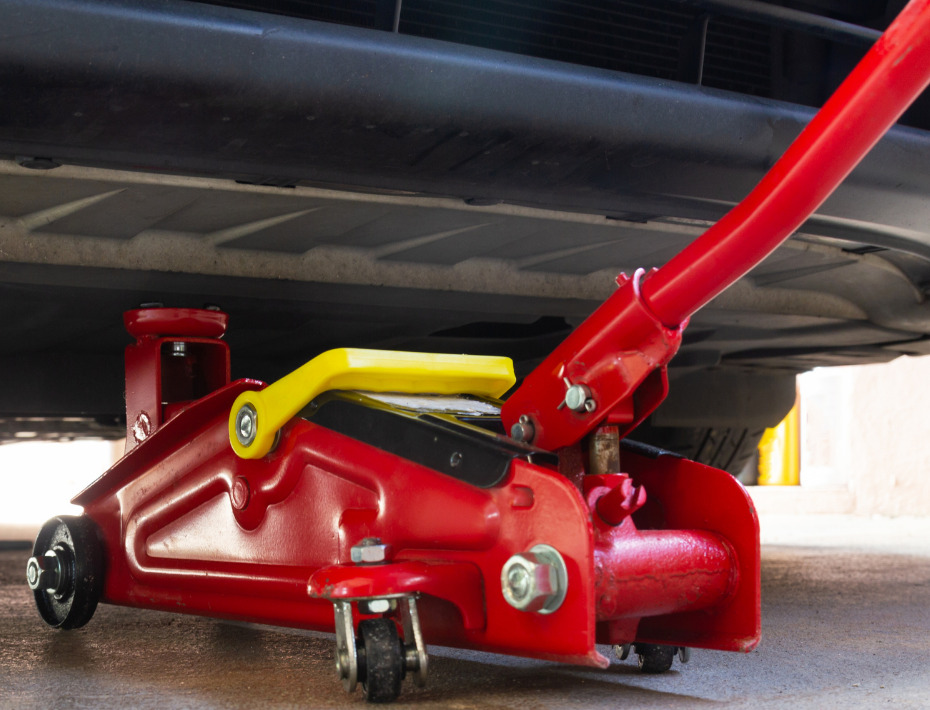
Although not technically a part of your car, every car should always contain a jack. A vehicle jack uses the power of hydraulics or mechanical leverage to lift up part of a car allowing you access to be able to change the tire. When choosing a jack it is important to select one with the correct weight rating for your vehicle. You want to make sure the jack can handle MORE weight than your car. If your car weighs 1.5 tons, you’ll want a 2-ton jack. This ensures that you are not operating at the edge of a jack’s capabilities.
You will also want to make sure that you select the right jack type for your vehicle. If you have a sedan or sports car a low-profile hydraulic floor jack will be best. If you drive a truck or SUV you will want a pop-up hydraulic bottle jack. A hi-Lift jack is best if you own a truck. Check your vehicle’s manual to see where the factory lift points are located. Never assume that the spot you’ve picked is safe before lifting, you run the risk of damaging the vehicle or potentially creating a dangerous situation.
Tips for caring for your jack: Regular maintenance is key to keeping your jack working well. A floor jack should not leak, and signs of leakage indicate that service is needed. Keep it clean, wipe it down after every use, when you change the oil or lubricate it and once a year give it a good deep clean. Keep it lubricated. Grease works better than oils because it will remain in place without dripping. Change the hydraulic oil once every two years, taking care not to over or under fill it. Before storing the jack release all pressure to help keep it working better for longer.
K – Kilometers
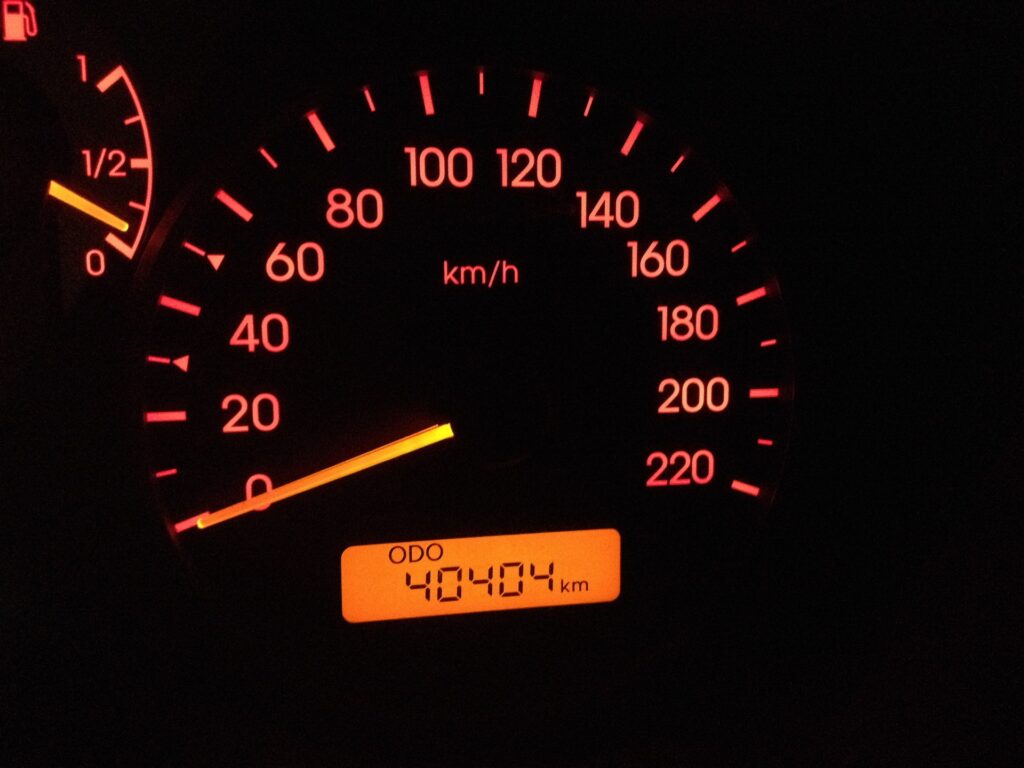
The kilometers that you put on your vehicle affect what you will pay in gas, maintenance and insurance, but did you know that how you accumulate those kilometers matters? Higher mileage cars have usually been driven long distances which means brakes, clutch, gears, and many other parts suffer less wear and tear compared to a car that had recorded the same millage on shorter journeys. The more you drive your car, the more maintenance it will need, but cars are built to be driven. Keeping it parked will cause many of the components to rust, become brittle or break. Like most things in life, it is all about balance.
Tips for taking care of your cars kilometers: Try to take your vehicle out for a drive for an hour or longer once a week. Keeping up with the maintenance of your car regardless of the length of the drives that you take is extremely important. Catching a minor issue before it becomes a major problem can save your car a lot of work and you a lot of money.
L – Lights
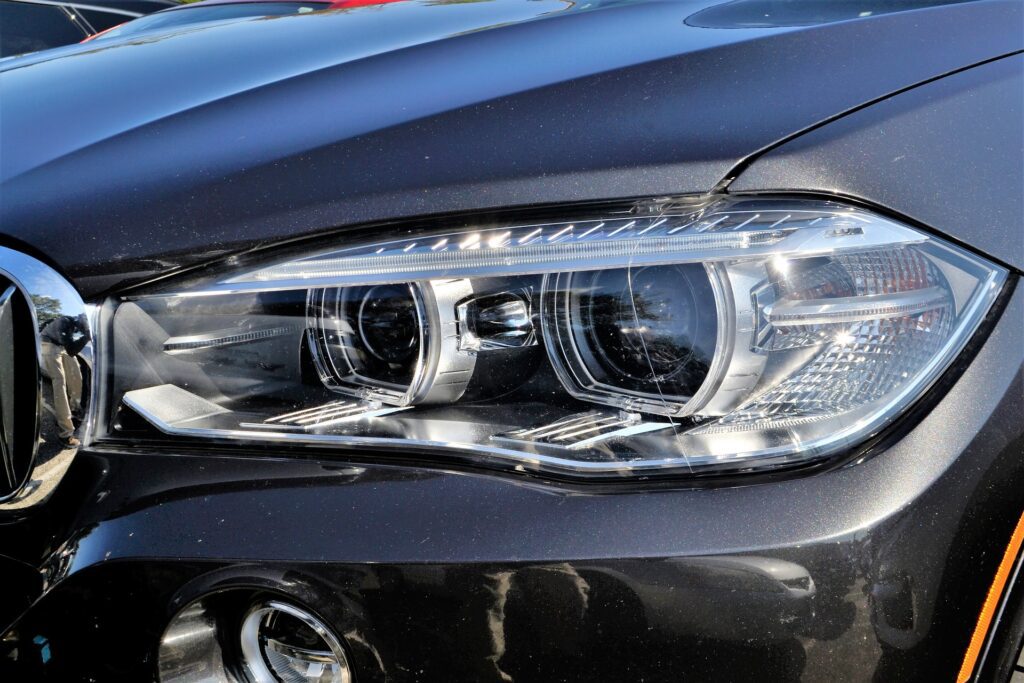
The lights on your vehicle are one of the most important components in keeping you safe, yet are often one of the least thought about parts of a car. Your car’s headlights make it so that you can see better in rain, snow, fog and night and ensure that other vehicles can see you. Your brake lights warn the cars that are behind you that you are braking and slowing down. First Gear recommends LED lights over the traditional halogen bulbs. They last longer, are more efficient, and provide better visibility at night. (For our full list of the benefits of LED lights check out our article here). Making sure that all of the lights of your vehicle are working is vital to safe driving. First Gear always checks your cars headlights, taillights, and turn signals when we do any maintenance inspection or oil change.
Tips for caring for your headlights: Make sure to check them regularly. It can be challenging to notice if a brake light or turn signal is out. Ensure that the covers of your lights are clean, polished and free of debris so that your lights can shine bright. Rain, heat sunlight and road conditions can all cause your headlight cases to turn cloudy. First Gear Automotive offers a cleaning and polishing service for your light cases to ensure that you are seeing clearly.
M – Muffler
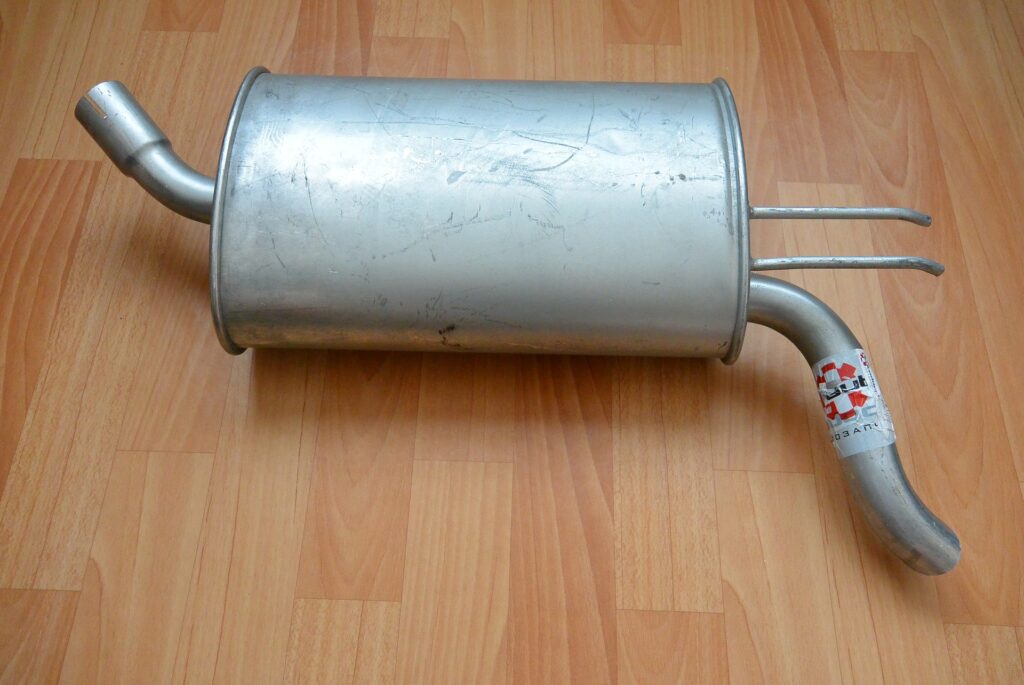
One of the most important parts of your car, the muffler plays some major roles; one is that is helps reduce the amount of noise produced by your engine. It also controls the back pressure of the engine which improves the performance and endurance of your car’s engine. The muffler emits multiple types of toxic gases. Carbon dioxide, hydrocarbon and sulphur dioxide and stops them from being released into the air in your cabin. It’s the exhaust system of your car’s engine and is susceptible to problems due to its location under the car. Rust, corrosion, snow, ice and potholes are the biggest enemies of your muffler. Water collects on the inside of the exhaust system, turning into condensation and rust. Mufflers get holes or lose pieces when the car hits a pothole or rocks or ice is kicked up from underneath the vehicle.
Tips for caring for your muffler: avoid roads with many potholes if possible. If you live in an area that is by salt water or receives a lot of precipitation consider getting your car rust proofed (read more about that under Q – Quarter Panel). If your vehicle is getting loader or you notice a decrease in gas millage get it checked out right away. Discovering the problem early is key to preventing it turning into a major problem.
N – Navigation

How many of you remember paper maps? If you were taking a road trip you had to plan out your route ahead of time. If you got lost or were re-routed you had to pull out the map to find where you were going. Now, most cars come with a navigation system build in. Systems that not only get you to your destination but also inform you of up coming traffic, speed traps and alternative routes to take. Definitely a along way from fighting with a paper map.
Tips for caring for your cars navigation system: As new roads are built, streets are renamed and routes are changed it is a good idea to update your navigation system. First Gear recommends every 4 years. If you use your smartphone instead of a built-in system, make sure that you have it mounted to a place that is easy for you to glace at without disrupting your visibility. It is also important to make sure that it is hands-free.
O – Oil Filter
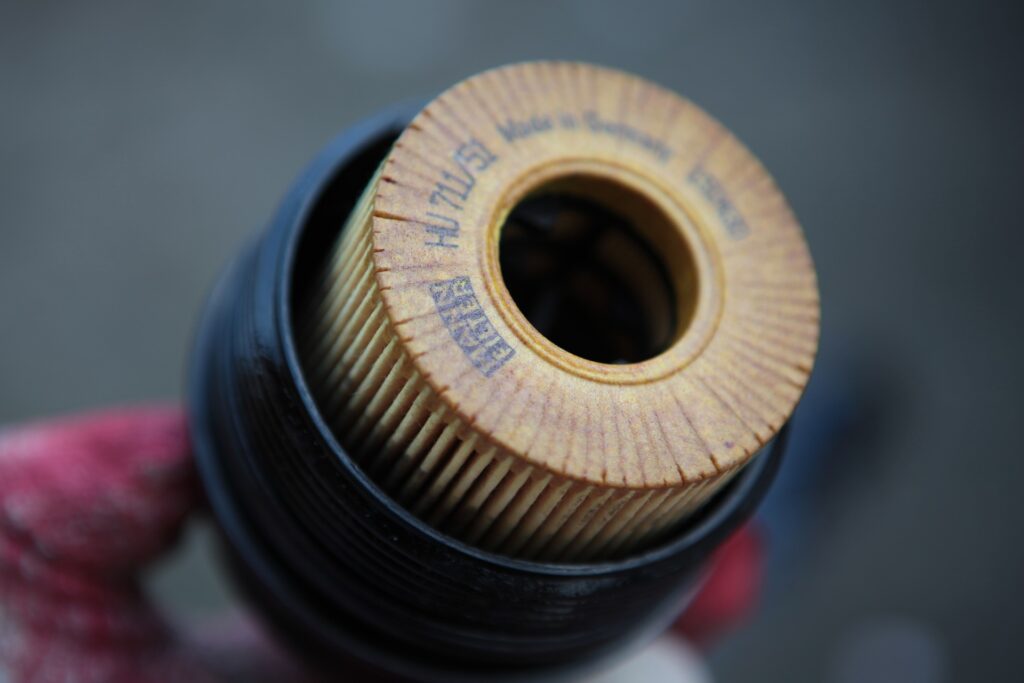
The oil filter is a small part of the car’s lubrication system but plays a huge role in protecting the engine from premature wear. All of the moving parts of the engine need lubrication and require clean oil in order to do that. As the vehicle is running, tiny bits of metal chip off of the various parts of the engine. If these bits of metal were allowed to recirculate through the engine via the oil, they could break off other bits of metal and cause erosion in the engine. The oil filter catches these tiny particles and ensures that the oil that is running through your vehicle is clean. It is important to use the correct oil filter for your car as an ill-fitting oil filter can fall off and a wrong filter can cause oil to leak out of the engine which can lead to major engine damage.
Tips for caring for your oil filter: Making sure that you replace your oil filter every time that you get your oil changed is the best thing that you can do to keep it running at peak performance. First Gear recommends every 5,000km for an oil change and new oil filter. This is simple maintenance but is one of the most important things that you can do to keep your vehicle engine from early aging.
P – Power Steering
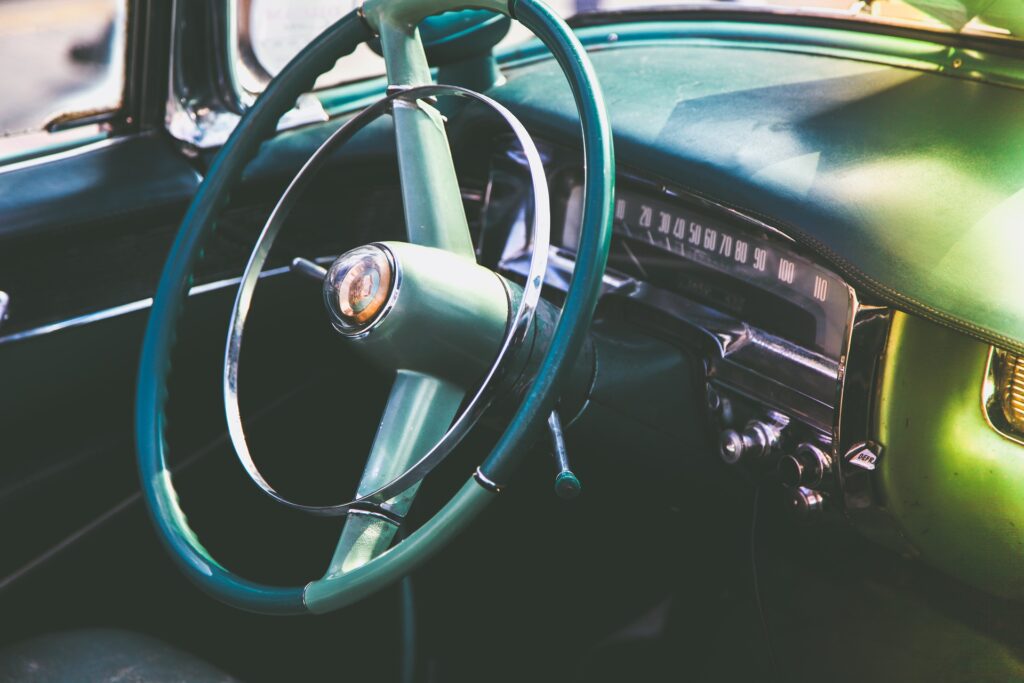
Power steering is an important system in every vehicle, as it helps drivers turn the wheel quickly and easily. Almost every modern car today comes with power steering. Without the use of power steering it would be extremely challenging to move the wheel of your vehicle especially during low speeds like turning a corner or pulling into a parking spot. Power steering fluid lubricates all of the moving parts within the power steering system and helps transfer power from the steering wheel to the steering mechanism. The power steering pump is the main part that moves the fluid throughout the system. If you notice a high pitched squeaking noise when you turn the wheel, it is probably an issue with the fluid pump.
Tips for caring for your power steering: Getting a flush. Over time dirt and debris can contaminate the fluid, which is why First Gear recommends getting it flushed every 45,000km. Avoiding this service, could cause the pump to work harder and wear out prematurely leading to bigger mechanical issues in the future. Replace the power steering fluid filter once a year. Inspect the hoses. The power steering fluid flows through two hoses, one that sends the fluid out and one that brings it back to the reservoir. First Gear recommends getting this hoses checked every year.
Q – Quarter Panel
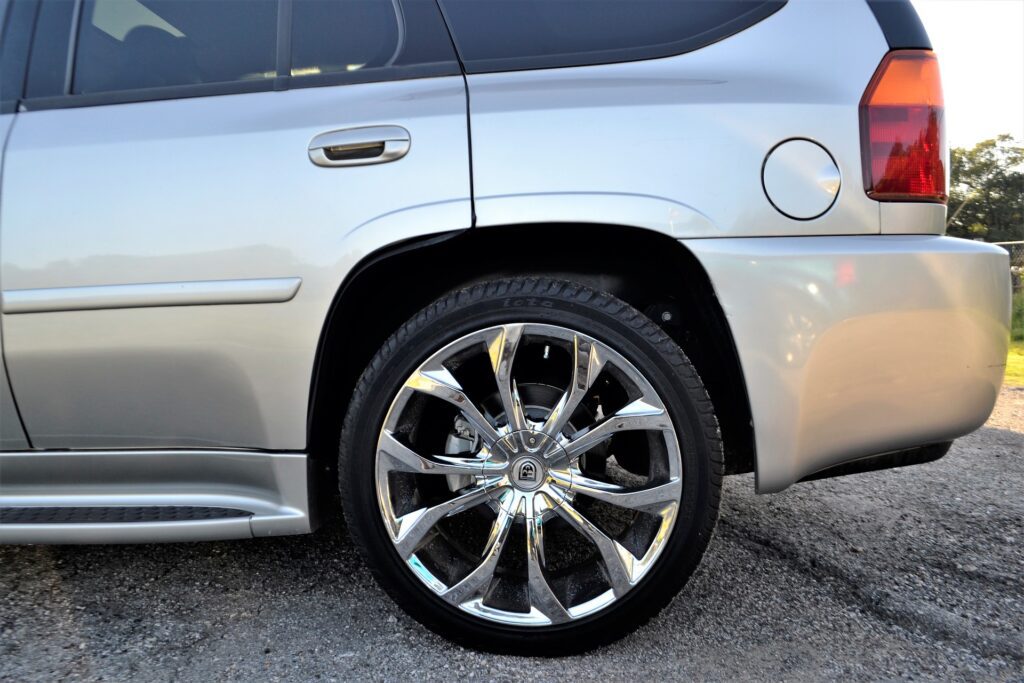
The quarter panel is the exterior surface between the rear door and the trunk and typically wraps around the wheel well. Except for collision damage the only problem that tends to happened is rust. Rust occurs when oxygen and iron come in contact and begin an oxidization process. Water, road salt, dirt and other corrosives all help speed up this process. The wheel well is one of the first places a car shows rust because it is constantly being coated with all of these substances. If you see rust on your car don’t panic. When caught early, surface rust can be repaired, and even stopped if caught in time. A new rust spot can be grinded down and retouched so that its not an issue. When left untouched rust grows and builds. It reaches a point where nothing can be done. When caught early the damage can be saved.
Tips for preventing rust: Rust proofing is an important maintenance practice for any vehicle. Rust proofing is when a thick, abrasion-resistant sealant (either oil or tar) that repels moisture is sprayed onto your car. Your vehicle’s undercarriage is completely exposed. It benefits greatly from rust proofing as it is most at risk from deterioration. As well as the quarter panel the other areas of your vehicle that should be rust proofed are; inside of your doors, side panels, inner fenders, hood, trunk, seams and joints of all critical spots, for lasting protection. First Gear recommends every 1- 2 years for rust proofing depending on where and how much you drive.
R – Radiator

Engine’s produce a lot of heat, to prevent them from overheating the car pumps coolant throughout the engine. The coolant carries the heat generated by the engine to the radiator. The radiator transfers the heat from the fluid inside to the air outside, thereby cooling the fluid, which cools the engine. Radiators also cool the automatic transmission fluid, air conditioner refrigerant, intake air, motor oil and power steering fluid. The radiator is a fundamental element in your engine’s cooling system, it regulates the temperature of the engine preventing internal components from melting, melding together and causing your vehicle to malfunction. Radiators are typically mounted behind the front grill where they will receive airflow from the movement of the vehicle. Function of the radiator can be damaged by low or expired coolant. A malfunctioning radiator may cause significant damage to the engine.
Tips for caring for your radiator: Keep your coolant topped up, First Gear checks your coolant levels with every oil change. Get a flush. Unwanted contaminants and debris can build up over time and can cause radiator corrosion, generating rust and scaling. Flushing out the radiator gets rid of the old fluid so this doesn’t happened. First recommends a coolant flush every 100,000km. Keep the radiator cap on tight; it’s designed to keep the entire coolant chamber pressurized.
S – Suspension
The suspension system of a car is responsible for a smooth ride and keeping the car in control. It controls the friction between the tires and the road to provide steering stability and good handling. It limits the impact of road conditions to the car and to the passengers and driver. The suspension system includes; tires, tire air, springs, shock absorbers and linkages that connect the vehicle to the wheels. The system is complex and controls vehicle bounce, roll, sway, drive and acceleration squat. It provides consistent handling and braking and prevents premature tire wear. It also maintains dynamic wheel alignment and helps keep the tire in contact with the road. Worn suspension reduces driver control and the stability of the vehicle so regular maintenance is very important.
Tips for caring for your suspension: Avoid driving over large potholes or bumps in the road, especially at high speeds as this can damage your suspension. Maintain a good tire pressure, incorrect tire pressure could put added strain on your suspension. Regular maintenance helps to ensure that any issues are identified and fixed as early as possible saving you major problems and expense down the road. First Gear recommends a full service every 20,000km or 12 months whichever comes first.
T- Transmission
Most car transmissions are compromised of five to six gear sets and a series of gear trains. Gear trains are basically belts/chains that run along the outside of two or more gears. This allows the driver to control how much power is delivered to the car without changing how fast the engine runs. The transmission helps to ensure that the engine spins at the right rate without going too fast or too slow. A transmission changes gears depending on a car speed and how far the gas pedal is pushed down. A process called the accelerator input. This happens in order to keep the vehicles RPM’s (revolutions per minute) low so the turning gears don’t overload your engine. When you’re driving slowly, you can stay in a lower gear and avoid damaging your engine. When you must move more quickly, you can switch gears to a higher level.
Tips for caring for your transmission: Check the transmission fluid regularly. The fluid should be bright red and clear and should smell sweet. If the fluid is dark, cloudy or smells bad make an appointment with Frist Gear to check it out. Flushing your transmission once a year keeps it running smoothly. With a flush your transmission filter should also be changed. Not all vehicles have a transmission filter, but if your does it should be replaced once a year. This is also a good time to get a diagnostic check done to look for leaks or other abnormalities. In an automatic vehicle don’t change gears from reverse to drive (or vice-versa) while your vehicle is moving. This puts strain on the transmission and can lead to serious problems.
U- Undercarriage
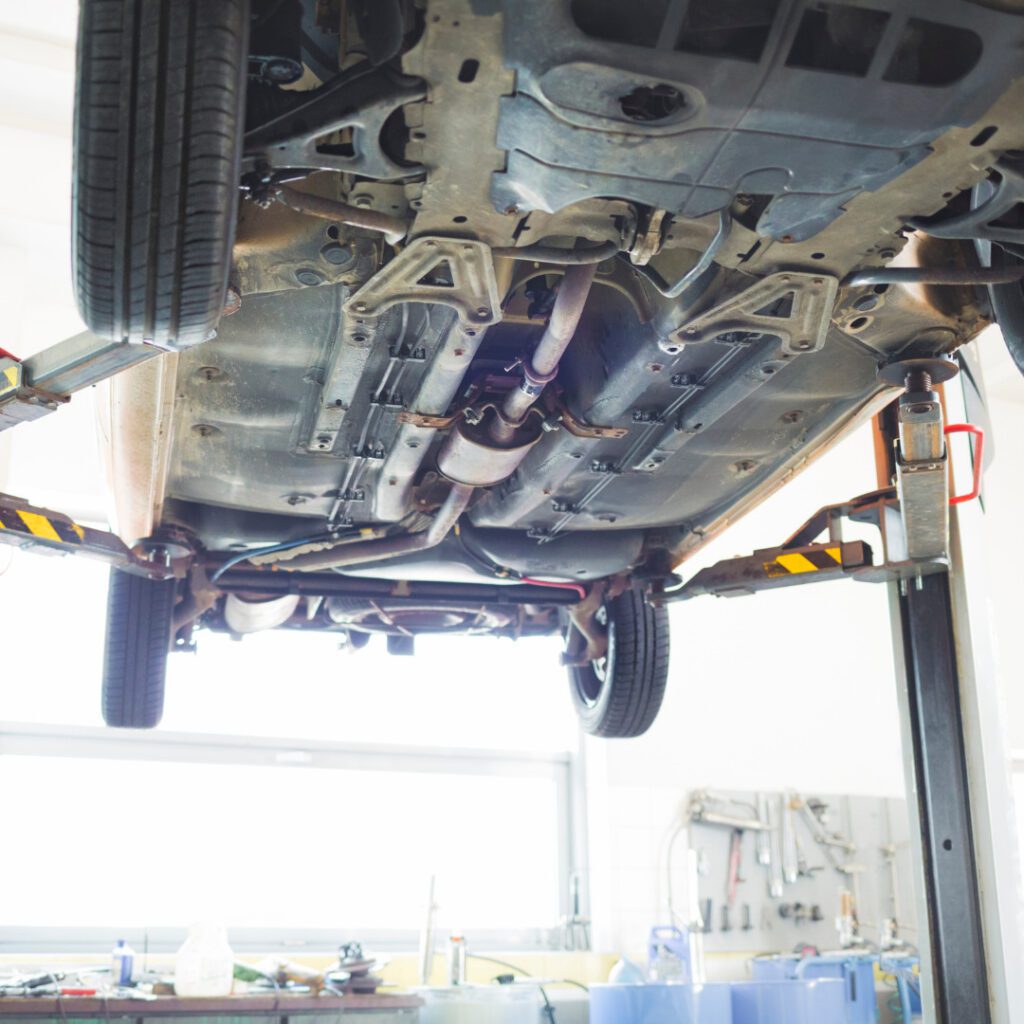
The undercarriage of a car is everything that is under the main body of the vehicle. The term was originally used to describe the underneath of a horse-drawn carriage and has transferred to today. Underneath the vehicle is a complex system of important elements for your car including; exhaust system, suspension, gas tank and fuel lines, steering, suspension, brake system.
There are many factors that can create damage to the undercarriage such as salt, gravel, potholes and road debris. Salt has a corrosive effect on the undercarriage that can lead to quite a bit of damage if left unattended. If you live near the ocean, salt water can have the same effect on your car. As you drive along the salted roads, the salt splashes up onto your vehicle’s undercarriage and sticks. The stuck salt corrodes the undercarriage metal and eventually eats through the material. Potholes cause parts of the undercarriage to hit the ground causing serious damage. Potholes also kick up dirt and debris into the nooks and crevices. Another factor that can cause damage to the under carriage is mud. Mud holds a lot of moisture and when left over time causes rust to form and the drain holes to clog or become restricted.
Tips for caring for the undercarriage: Cleaning is key. Taking your vehicle to a car wash that washes the undercarriage of your car is important. First Gear recommends washing your car every couple of weeks even in the winter months to get rid of any build-up. If you want to wash your car yourself you will need a pressure washer. This will ensure that you have the right amount of force to remove all of the stuck-on debris. Rustproofing is also a great idea to help protect the undercarriage of your vehicle. It coats it with a protective layer to stop moisture and corrosion from occurring. Regular inspections of the mechanical components underneath your car will ensure that any potential problems can be found and fixed before they turn into major issues.
V – Valve
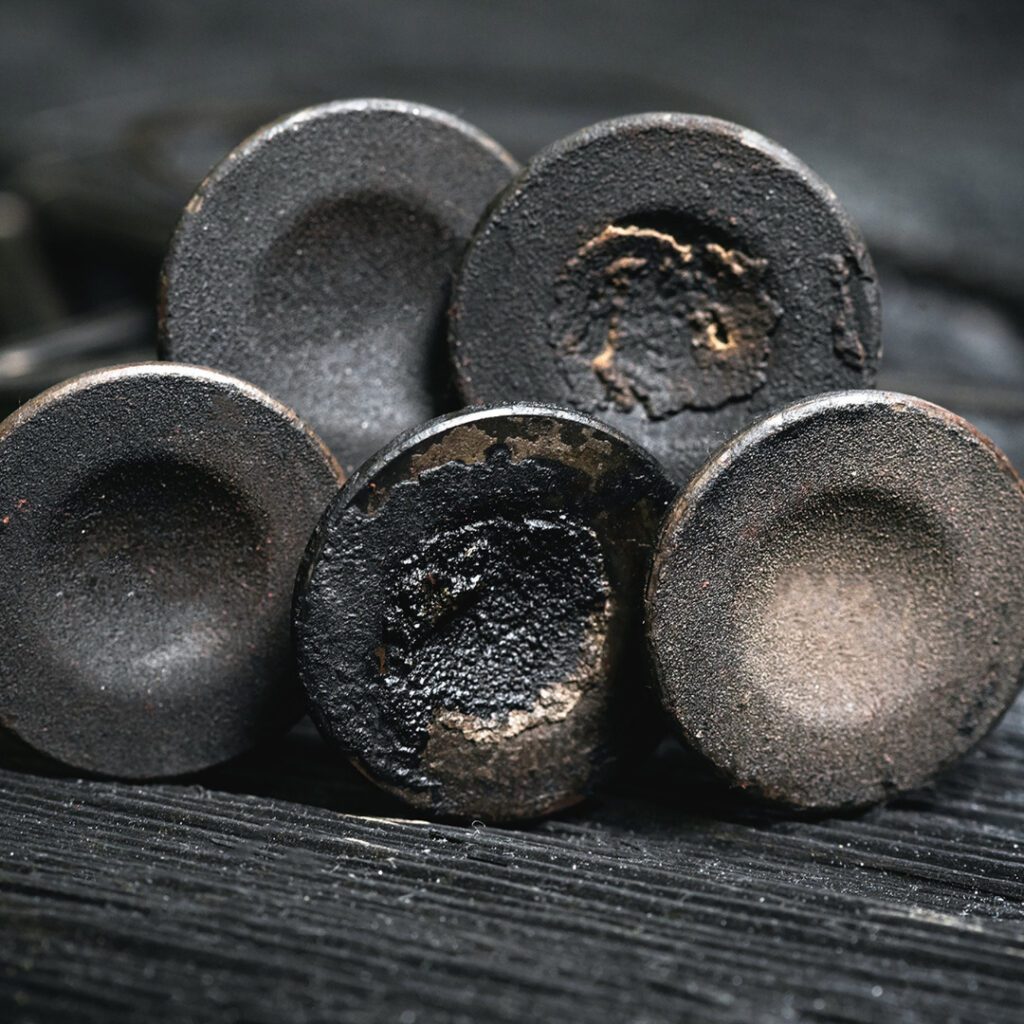
An engine cannot run without valves. Engine valves are small but play a vital role in keeping your car running smoothly. Located in the cylinder head and their main function is to let air in and out of the cylinders. The air ignites the fuel which drive the pistons up and down. There are two types of engine valves; intake and exhaust valves. The intake valves let air in, and the exhaust valves let exhaust air out. The more air you can move in and out of the engine the more efficiency and power it will have. Their design has them open and close at precise moments, to allow the engine to run efficiently at all speeds. This is why the engine valve plays a critical role in an engines performance. Valves are actually central to the nature of an engine’s power, economy and emissions.
Carbon builds up in the cylinders, intake and exhaust valves. Think of your engine as a fireplace or barbecue pit. When you burn wood, the by-product is the soot, the by product in the cylinders is carbon that coats the sides of the valve. These deposits on the intake valves can restrict the airflow causing a loss of high speed power. The deposits can also act like a sponge and soak up fuel from the injectors. This disrupts the mixing of air and fuel, causing a lean fuel condition, hesitation and reduced performance.
Tips for caring for your valves: Certain fuels contain detergent additives that help keep your valves free from build-up. Finding a gas station near you that uses these additives will help stop carbon build-up. First Gear also recommends using a gasoline cleaning additive like Amsoil Upper Cylinder Lubricant. Adding this to your fuel every time you get an oil change helps to remove debris and build-up from your valves. Just ask us to add it the next time we see you for an oil change.
W – Wheel
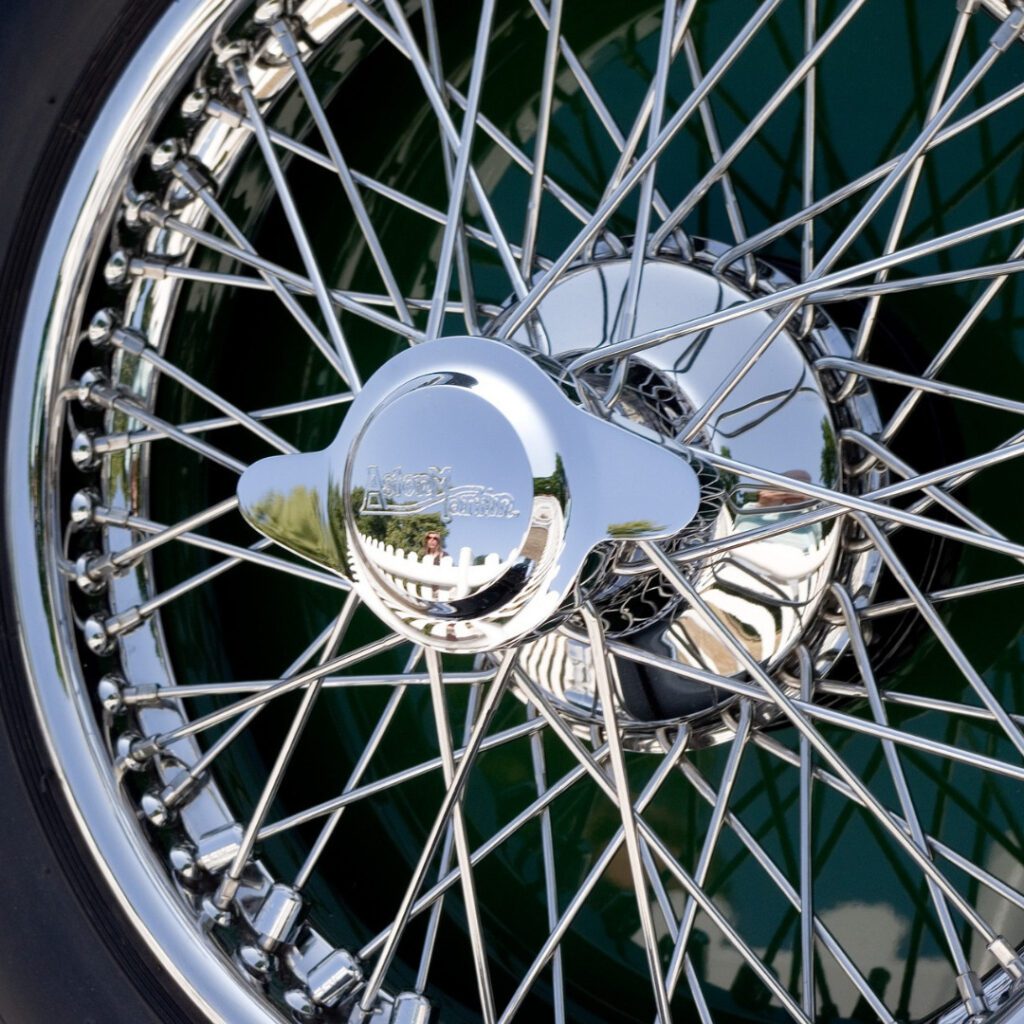
We all know the importance of wheels on a car. From a technical perspective, wheels provide a way of fastening the tires to the car in order for the engine put its power to the ground. The engine’s power moves through the drivetrain down to the wheels. The wheels connect to the wheel hub and rotate around the axles. The wheel transmits the power from the axel/hub to the tires creating the energy to move the car. The amount of leverage created depends on how large the wheel is in relation to the power that the engine generates.
Tips for caring for your wheels: The best thing that you can do to care for your wheels is to make sure that you have the right ones for your vehicle. The great wheel decision is between steel or aluminum (alloy) wheels. Steel wheels are strong, tough and resistant to rust. They are heavy which can decrease your vehicle’s agility and ability to accelerate and can put strain on the suspension. However, this weight can be helpful in the winter to prevent slipping on snow and ice. Steel wheels are also significantly cheaper than alloy wheels.
Alloy wheels are much lighter than steel and are more customizable allowing you more options to style your vehicle. They operate at a higher performance in most conditions and fuel economy is an advantage. There is less strain on the suspension of your car as alloy wheels are much lighter. However because they are lighter, alloy wheels tend to bend and even crack more easily than tougher steel wheels. The aesthetic appearance of alloy wheels makes them more prone to cosmetic damage and more expensive than steel wheels. First Gear recommends having alloy wheels in the summer for style and performance and steel wheels in winter for strength and durability.
X – XL Synthetic Oil
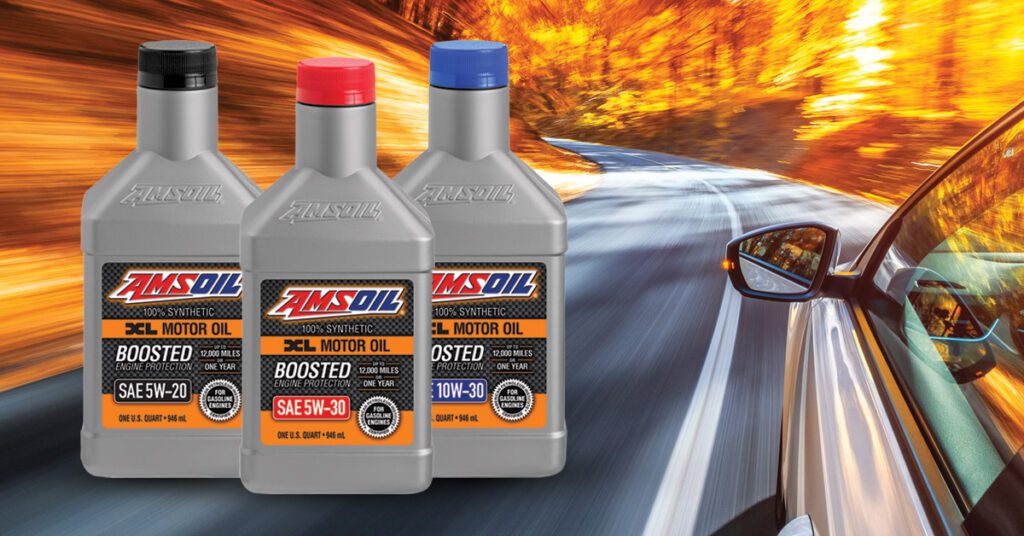
Engine parts are in constant contact with each other and moving at high speeds. In the extreme environment of your engine, components can wear and break down. Your motor oil is the only protective barrier between these components. As oil circulates through your engine, it can pick up deposits. As well as deposits over time, conventional oils can form sludge, which can reduce your engine’s efficiency and, ultimately, reduce the life of your engine. Amsoil’s XL synthetic motor oil series is fortified with detergent and dispersant additives. These help to keep your engine clean with it’s ability to neutralize acids and resist sludge, corrosion and carbon deposits. XL provides 25 percent more cleaning power to help keep your engine running smoother, longer.
Tips for caring for XL Synthetic Motor Oil ~ Use it. Synthetic oil changes are more expensive but they create extra protection for your engine saving you money in repairs down the road. Amsoil states that if you use their XL series of motor oil you can go for much longer than a regular or another synthetic oil change. First Gear recommends every 10,000km because of Amsoils superior quality. So although it may seem like a lot of money for an oil change it will actually save you money. Another option is to do a synthetic oil change every other time to bring costs down and still give you the benefits from synthetic oil. If you have any questions regarding the XL series or any other Amsoil products First Gear Automotive would be happy to answer them for you.
Y – You

You are a very important component to the wellbeing of your vehicle. How you drive it and how well you take care of it will greatly impact how long it lasts and how often you need to get it repaired. If you treat it well and invest a little time and effort into it, it should repay you with years of good driving ability. If you have been following along in our ABC’s of car care you know all of things that you need to do to properly car for your vehicle. Most of them involve maintaining a good maintenance schedule with First Gear Automotive, but below are the top 3 things that YOU can do to ensure a happy, healthy vehicle for years to come.
- Long Drives. Just like a dog needs to go for long runs, a car needs to go for long drives to keep up it’s health.
- Don’t Overload It. It can be tempting to fill your car to the brim to avoid having to rent a van or trailer but the more weight you ask your car to carry, the more fuel it burns, and the more strain you put on every one of the mechanical components responsible for setting it into motion and stopping it again.
- Be Gentle. Don’t drive your car beyond it’s abilities. Driving too fast for the engine type. Driving over rough terrain when the vehicle is not made for off roading. Constantly running the car on empty will all lead to massive damages on your car that can be easily avoidable.
Z – Zero

Zero. The number of problems you will have if you follow our ABC’s and get your vehicle serviced with First Gear Automotive. Well maybe not zero, but very few. Cars cost money, that is just an unfortunate fact but like any relationship if you put in a little extra time and care it will thrive for a long time. With regular maintenance inspections and giving your car the seasonal support that it needs, you should be able to keep your car healthy and you happy for a long time. First Gear is committed to providing you with all of the information that you need to help you care for your vehicle all year long. If you have any questions about our ABC’s of car care series leave us a comment or give us a call and we would more than happy to help. Wishing you save and happy roads ahead.
